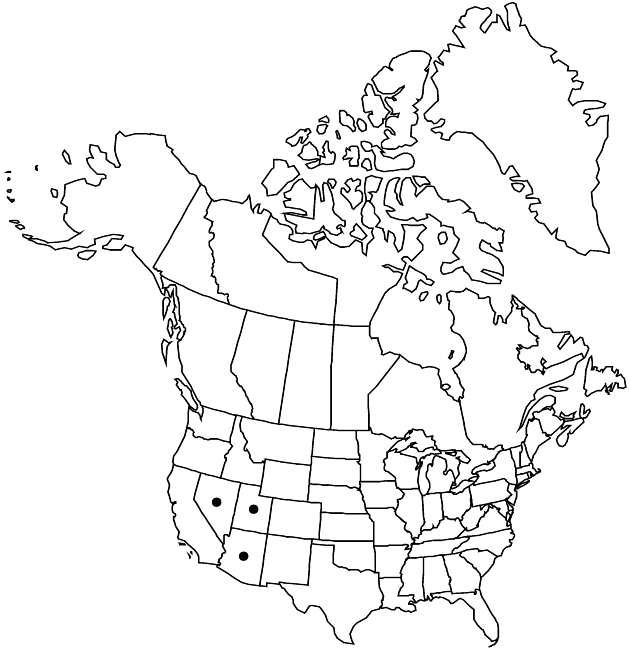Difference between revisions of "Gaillardia arizonica"
in A. Gray et al., Syn. Fl. N. Amer. 1(2): 353. 1884.
FNA>Volume Importer |
FNA>Volume Importer |
||
| Line 49: | Line 49: | ||
|publication year=1884 | |publication year=1884 | ||
|special status= | |special status= | ||
| − | |source xml=https://jpend@bitbucket.org/aafc-mbb/fna-data-curation.git/src/ | + | |source xml=https://jpend@bitbucket.org/aafc-mbb/fna-data-curation.git/src/f50eec43f223ca0e34566be0b046453a0960e173/coarse_grained_fna_xml/V19-20-21/V21_1065.xml |
|tribe=Asteraceae tribe Heliantheae | |tribe=Asteraceae tribe Heliantheae | ||
|subtribe=Asteraceae (tribe Heliantheae) subtribe Gaillardiinae | |subtribe=Asteraceae (tribe Heliantheae) subtribe Gaillardiinae | ||
Revision as of 20:32, 16 December 2019
Annuals, 5–40 cm. Leaves mostly basal, mostly restricted to proximal 1/5(–1/3+); petiolar bases 0–2+ cm; blades oblanceolate, obovate, or spatulate, 3–6(–9) cm × 5–25 mm, mostly raggedly pinnately lobed, sometimes entire, sparsely to densely villous with jointed hairs. Peduncles 5–35 cm. Phyllaries 14–20, lanceolate to lance-attenuate, 6–12+ mm, ciliate with jointed hairs. Receptacular setae 0 or 0.3–0.8 mm. Ray florets 10–13; corollas yellow to orange, 17–22 mm. Disc florets 40–100+; corollas yellow, tubes 0.6–0.8 mm, throats campanulate, 2.8–3 mm, lobes deltate, 0.5–0.7 mm, jointed hairs to 0.3 mm. Cypselae obpyramidal, 2 mm, hairs 2 mm, inserted at bases and on angles and faces; pappi of 8–10 obovate or ovate to lanceolate, aristate or muticous scales 2–5 mm (if aristate, scarious bases 2–3.5 × 1.3–1.6 mm). 2n = 34.
Phenology: Flowering Mar–May.
Habitat: Sandy desert washes and fans
Elevation: 300–1200 m
Distribution

Ariz., Nev., Utah, Mexico (Sonora).
Discussion
Selected References
None.